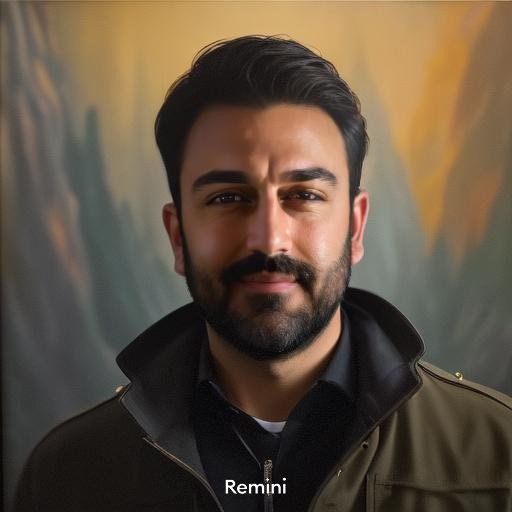The realm of artificial intelligence (AI) has witnessed remarkable advancements in recent years, revolutionizing various fields. One notable development is the emergence of artificial intelligence generated images, where machines create realistic visuals with astonishing accuracy. However, alongside these technological breakthroughs, ethical concerns have surfaced, demanding a closer examination of the implications and potential consequences. As artificial intelligence continues to evolve, it becomes increasingly crucial to address these ethical considerations and strike a balance between innovation and responsible implementation.
In this thought-provoking article, our attention is directed towards the ethical implications of artificial intelligence generated imagery, delving into the intricate realms of copyright, accountability, and the pivotal role of artificial intelligence creators in nurturing a creative landscape that embraces both artistic expression and ethical considerations. Throughout the piece, Yahya Yuksel, a visionary entrepreneur with a keen understanding of the vast potential of artificial intelligence art, skillfully captures the delicate balance between harnessing its capabilities and being mindful of the associated challenges and ethical dilemmas that may arise. Join us as we explore the fascinating intersection of technology, art, and ethics in this captivating discourse.
In the age of AI art, the question of copyright has become a particularly contentious issue. On one hand, artists who utilize artificial intelligence systems to create their artwork argue that they should be granted the rights to their creations, as these AI-generated pieces often bear the unique imprint of the artist's style and vision. They believe that these creations are a result of their creative direction and input, even if they are facilitated by algorithms and data sets.
On the other hand, skeptics raise concerns about the nature of AI creations. They argue that artificial intelligence generated art cannot be considered truly original works, as they are fundamentally driven by algorithms and pre-existing data. According to this perspective, the real creative agency lies within the programmers and engineers who design and train the artificial intelligence systems, rather than the artists who utilize them. These skeptics question whether artificial intelligence creations can truly capture the essence of human ingenuity and expression.
This ongoing debate highlights the complex and evolving relationship between artificial intelligence, art, and copyright. As artificial intelligence continues to advance and push the boundaries of what is possible in the artistic realm, the legal and ethical considerations surrounding copyright will undoubtedly require careful examination and deliberation.
Yahya Yuksel, who acknowledges the importance of safeguarding intellectual property rights, asserts that arriving at a fair and equitable solution necessitates a deeper understanding of the creative process. The artificial intelligence generated images, which blur the lines between human and machine collaboration, present challenges in determining the ownership of these works. While acknowledging that the artificial intelligence system's developers hold some rights to their creations, Yuksel contends that the artists who use these systems must also be recognized for their contribution to the final output.
Another crucial ethical aspect to consider in the realm of AI-generated images is accountability. Instances of deepfakes, which are highly realistic manipulated images and videos created using artificial intelligence, have increasingly found their way into popular culture, often with dangerous consequences. These sophisticated manipulations blur the line between reality and fiction, making it difficult to distinguish genuine content from fabricated ones. In a world where seeing is no longer believing, it is essential to recognize and address the complex web of responsibility surrounding the creation, dissemination, and potential harm caused by such manipulations. It becomes imperative to establish frameworks and guidelines that outline the roles and obligations of various stakeholders, including artificial intelligence developers, content creators, and platforms, to mitigate the adverse effects and protect the integrity of visual information in our digital age.
Addressing this issue, Yahya Yuksel emphasizes that artificial intelligence creators bear a significant degree of responsibility in mitigating potential missteps stemming from their technological innovations. For instance, they must closely monitor the applications and effects of their inventions while also employing adequate measures to mitigate the risks they pose. Educating users and the broader public about the capabilities and limitations of artificial intelligence technologies will also assist in managing the repercussions of AI-generated images.
Yahya Yuksel and others passionately urge artificial intelligence creators to be diligent stewards in this ever-evolving domain. It's not just about generating artificial intelligence images; it's about ensuring ethical boundaries, positive contributions to art, and preserving the cultural significance of traditional art. To foster respect for artistic and ethical borders, artificial intelligence creators should engage in open conversations with artists, policymakers, legal scholars, technology enthusiasts, and other experts. By addressing challenges and opportunities together, we can develop a comprehensive approach that enriches art and promotes positive societal impact while responsibly harnessing artificial intelligence technology.
To achieve these noble goals, creators must remain vigilant in their unwavering commitment to ethical standards. They should embark on a continuous journey of exploration and refinement, pushing the boundaries of artificial intelligence systems to new heights while ensuring that the essence of art and culture is preserved and celebrated. It is through this tireless dedication and pursuit of excellence that the true potential of artificial intelligence can be harnessed for the betterment of society as a whole.
The ethical landscape of artificial intelligence generated images is complex and multilayered. Yahya Yuksel, attuned to both the benefits and pitfalls of artificial intelligence art, emphasizes the need for conscientious navigation through these ethical dimensions. By effectively addressing copyright, accountability, and the responsibility of artificial intelligence creators, it becomes possible to cultivate a landscape that respects artistic integrity and ethical boundaries. As we continue to explore the potential of artificial intelligence in art, it is crucial to remember that with great power comes great responsibility, and it is our collective duty to wield this power ethically and thoughtfully.





Comments